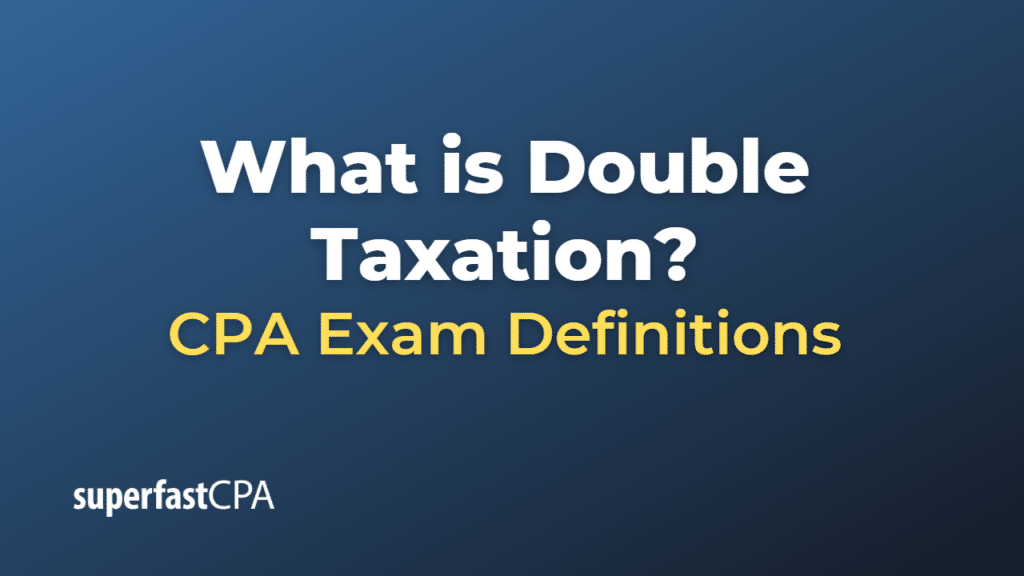Double Taxation
Double taxation is a tax principle referring to the situation where the same income is subject to tax twice. This can occur in two main ways:
- Corporate Double Taxation: This happens when the same income is taxed at two levels — once at the corporate level when the income is earned, and then at the individual level when the income is distributed to shareholders as dividends. This is a common issue in many jurisdictions because corporations are considered separate legal entities from their owners.
- International Double Taxation: This occurs when the same income is taxed in two different countries. For example, a company operating in two different countries might have to pay taxes on its income in both countries.
Double taxation can be a significant issue for businesses and individuals alike. Various mechanisms have been developed to mitigate the effects of double taxation, such as tax treaties between countries (which often include provisions to offset taxes paid in one country against the tax payable in the other), and systems where dividends paid to individuals are taxed at a lower rate to account for corporation tax already paid.
However, the rules and regulations concerning double taxation can be complex and may vary significantly from one jurisdiction to another. It’s usually advisable to consult with a tax professional to understand how these rules apply to a specific situation.
Example of Double Taxation
Let’s look at examples for both corporate and international double taxation:
Example of Corporate Double Taxation:
ABC Corporation earns $1,000,000 in profits. The corporate income tax rate is 25%, so ABC Corporation pays $250,000 in taxes.
After paying corporate taxes, ABC Corporation has $750,000 left, which it decides to distribute entirely as dividends to its shareholders. Assume there is a dividend tax rate of 15% for the individual shareholders. The shareholders will pay an additional $112,500 in taxes on the dividend income ($750,000 * 15%).
So, the $1,000,000 of income has effectively been taxed twice: once at the corporate level and once at the individual level, with a total of $362,500 paid in taxes ($250,000 + $112,500).
Example of International Double Taxation:
Let’s consider a company, XYZ Inc., based in the US but also operating in Country B. Assume that XYZ Inc. made $100,000 in profit from its operations in Country B.
Country B taxes corporate profit at a rate of 20%, so XYZ Inc. pays $20,000 in taxes to the government of Country B. When XYZ Inc. brings the remaining profit back to the US, the US government also taxes it. Suppose the US tax rate is 30%. XYZ Inc. would pay $30,000 on the same profit to the US government.
In this situation, the same income has been taxed twice in two different countries, resulting in double taxation. However, tax treaties or foreign tax credit mechanisms often exist to prevent or reduce such double taxation.













